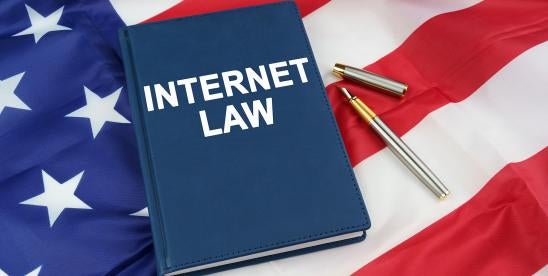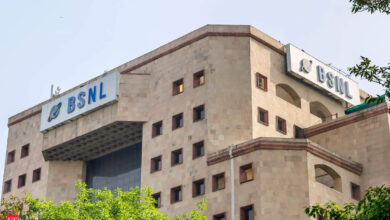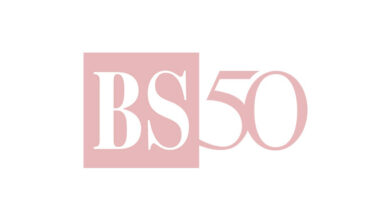FCC Reclassifies BIAS as a Telecommunications Service

On May 7, 2024, the FCC released a Declaratory Ruling reclassifying “broadband Internet access service” (“BIAS”) as a “telecommunications service” subject to the jurisdiction of the FCC under Title II of the Communications Act. It was accompanied by an Order removing BIAS from most Title II regulations, and a Report and Order applying a set of Open Internet rules to BIAS providers. (For clarity, the remainder of this blog will refer to the proceeding as the “Order.”)[1]
We summarized key provisions impacting ISPs in an initial blog post on this topic earlier this month. In June, we will provide our best guesses as to what the future holds with respect to net neutrality, the upcoming election, and potential Congressional action. This post examines what some consider to be the centerpiece of the Order: the Open Internet Rules.
A Brief Net Neutrality History Lesson
In its 2015 “Open Internet Order,” the FCC adopted “bright line” net neutrality rules applicable to BIAS: no blocking lawful content, no throttling lawful content, and no paid prioritization. The ink was barely dry on the new rules when, in January 2016, the newly GOP-led agency released the “Restoring Internet Freedom Order,” which largely converted the net neutrality rules from prohibited conduct to actions that were legal but which must be disclosed to customers. . .
To say net neutrality was a hotly-contested issue in 2015-16 is an understatement. The issue caused a 3,000% spike in the FCC’s web traffic and the agency received about 22 million comments. In August 2018, the FCC’s Inspector General concluded that the bulk of this was caused by a segment on John Oliver’s TV show.
While restoring net neutrality was identified early on as a priority for the Biden Administration, it was not until the fall of 2023, with the confirmation of Anna Gomez, that the Administration was able to secure a Democratic majority at the Commission. Following Commissioner Gomez’s confirmation, the Democrat-let FCC moved immediately to re-implement net neutrality rules.
Bright Line Rules
In the 2024 Order, the FCC reinstated several bright-line rules that:
- Prohibit BIAS providers from blocking lawful content, applications, services, or non-harmful devices (“No Blocking”);
- Prohibit BIAS providers from impairing or degrading lawful Internet traffic on the basis of content, application, service, or use of non-harmful device (“No Throttling”); and,
- Prohibit paid or affiliated prioritization practices (“No Paid Prioritization”).
The Order also implemented a “general conduct standard” prohibiting unreasonable interference or disadvantage in general, and adopted enhancements to transparency rules that had been narrowed by the FCC’s Restoring Internet Freedom Order” in 2017.
No Blocking
In the Order, the FCC determined that “the freedom to send and receive lawful content and to use and provide applications and services without fear of blocking continues to be essential to the Internet’s openness,” and expressed concern that BIAS providers may, in certain instances, be incentivized to block edge providers’ content. The no-blocking rule applies to transmissions of lawful content only. BIAS providers may refuse to transmit unlawful material, such as child pornography or copyright-infringing materials. The rule also entitles end users to connect, access, and use any lawful device of their choice, provided that the device does not harm the network. The no-blocking rule prohibits network practices that block a specific application or service, or any particular class of applications or services, unless it is found to be reasonable network management. Finally, this rule prohibits BIAS providers from charging edge providers a fee to avoid having edge providers’ content, services, or applications blocked from end-user customers.
No Throttling
The term “throttling” refers to conduct that is not outright blocking, but that inhibits the delivery of particular content, applications, or services, or particular classes of content, applications, or services. Under the Open Internet rules, BIAS providers are prohibited from impairing or degrading lawful Internet traffic on the basis of content, application, service, or use of non-harmful device. The no-throttling rule bans conduct that is not outright blocking, but that the FCC believes would inhibit the delivery of particular content, applications, or services, or particular classes of content, applications, or services. The rule also prohibits conduct that impairs or degrades lawful traffic to a non-harmful device or class of devices. The rule addresses instances in which a BIAS provider targets particular content, applications, services, or non-harmful devices and does not address slowing down or speeding up an end user’s connection to the Internet based on a choice clearly made by the end user. For example, a BIAS provider may offer a data plan in which a subscriber receives a set amount of data at one speed tier and any remaining data at a lower tier.
No Paid Prioritization
Finally, the FCC reinstated the prohibition on paid or affiliated prioritization practices, subject to a narrow waiver process. The term “paid prioritization” refers to the management of a broadband provider’s network to directly or indirectly favor some traffic over other traffic, including through use of techniques such as traffic shaping, prioritization, resource reservation, or other forms of preferential traffic management, either (a) in exchange for consideration (monetary or otherwise) from a third party, or (b) to benefit an affiliated entity. As with throttling, the FCC found that BIAS providers have both an incentive and the ability to engage in paid prioritization. However, the FCC may waive the ban on paid prioritization if a petitioner demonstrates that the paid prioritization practice would provide some significant public interest benefit and would not harm the open nature of the Internet. A successful waiver request would require the petitioner to provide evidence that the practice furthers competition, innovation, consumer demand, or investment, and does not harm the open nature of the Internet. This could be done by providing evidence that the practice: (i) does not materially degrade or threaten to materially degrade the BIAS of the general public; (ii) does not hinder consumer choice; (iii) does not impair competition, innovation, consumer demands, or investment; and (iv) does not impede any forms of expression, types of service, or points of view. This is an extremely high bar and waivers will not be routinely granted.
General Conduct Standard
In addition to the bright-line rules above, the FCC also reinstated a “no-unreasonable interference/disadvantage standard.” This standard allows the FCC to prohibit practices that unreasonably interfere with the ability of consumers or edge providers to select, access, and use BIAS to reach one another. This standard will operate on a case-by-case basis, applying a non-exhaustive list of factors, and is designed to evaluate other current or future BIAS provider policies or practices—not covered by the bright-line rules—and prohibit those that harm the open Internet. The FCC provided guidance to BIAS providers regarding the application of the standard and adopted a non-exhaustive list of factors that the agency will consider in its analysis. These factors include: (i) whether a practice allows end-user control and enables consumer choice; (ii) whether a practice has anticompetitive effects in the market for applications, services, content, or devices; (iii) whether a practice affects consumers’ ability to select, access, or use lawful broadband services, applications, or content; (iv) the effect a practice has on innovation, investment, or broadband deployment; (v) whether a practice threatens free expression; (vi) whether a practice is application agnostic; and (vii) whether a practice conforms to best practices and technical standards adopted by open, broadly representative, and independent Internet engineering, governance initiatives, or standards-setting organizations.
Transparency Rule
The FCC also adopted enhancements to existing transparency rules that require BIAS providers to publicly disclose accurate information regarding the network management practices, performance, and commercial terms of its broadband Internet access services sufficient for consumers to make informed choices regarding use of such services and for content, application, service, and device providers to develop, market, and maintain Internet offerings. BIAS providers must maintain the accuracy of these disclosures. When there is a material change in a provider’s disclosure of commercial terms, network practices, or performance characteristics, the provider has a duty to update the disclosure in a manner that is “timely and prominently disclosed in plain language accessible to current and prospective end users and edge providers, the Commission, and third parties who wish to monitor network management practices for potential violations of open Internet principles.”
* * *
These rules have been adopted, rescinded, and readopted in the past decade. And they could be rescinded yet again depending on the outcome of the 2024 Presidential election.
[1] In the Matter of Safeguarding and Securing the Open Internet, WC Docket Nos. 23-320, 17-108, Declaratory Ruling, Order, Report and Order, and Order on Reconsideration, FCC 24-52, rel. May 7, 2024 (“Order”).



